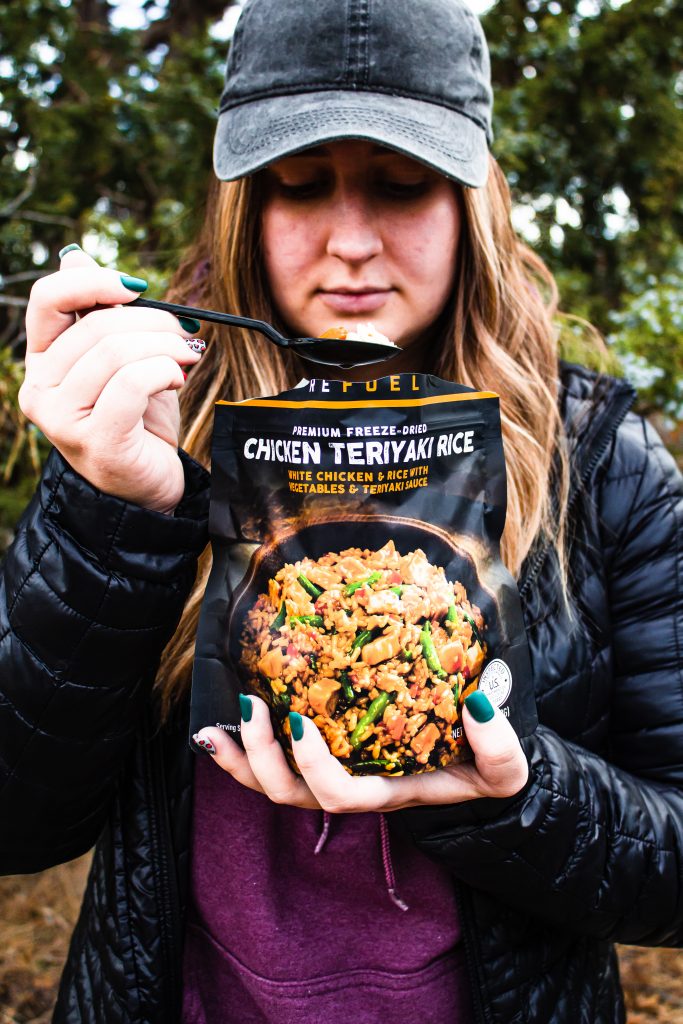Backcountry Cooking 101 - The Basics

There is no reason to just “survive” in the backcountry. You can still eat good and not add a ton of weight to your pack or your load. In this article, I will show you two styles of backcountry cooking and the basics for each. Whether you have backpacked in and are living off your back, or you have a small basecamp out in the woods. If you follow these basic rules, you will never go hungry.
Basecamp Cooking
You have scouted all day, hunted all evening, and you ended up with nothing. Or you have just finished a pack-out and you are spent! Either way, you have made it back to camp. Now what? It’s definitely time to eat, but where do you start? The cooking bin.
The Cooking Bin – Dedicate one bin to all things cooking. This needs to be big enough to store a small stove and some accessories.
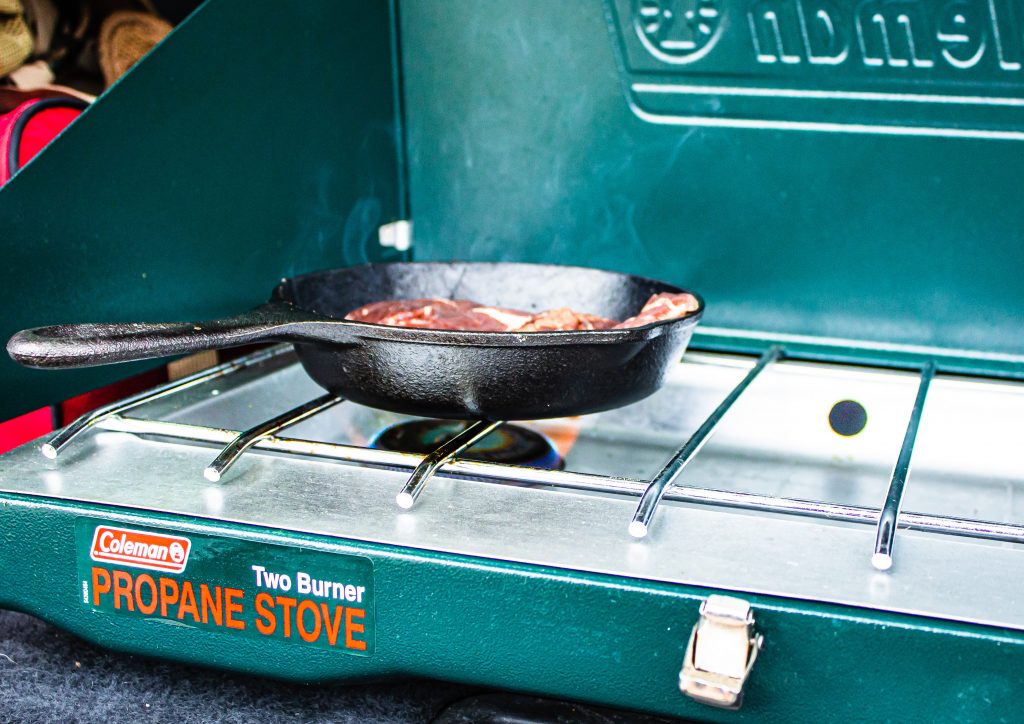
- Bin
- Lighter
- Water
- Two-burner stove
- Propane/Fuel
- Cast-iron Skillet
- Sea to Summit Utensils
- Spices
- Cooking spray/oil
- Black Diamond Voyager 140 Lumen Electric Lantern
- TORTILLAS
Obviously, you can add anything else to your bin, but these are the basics. Something to cook on, something to add flavor, something to eat with, and something to see what you are doing.
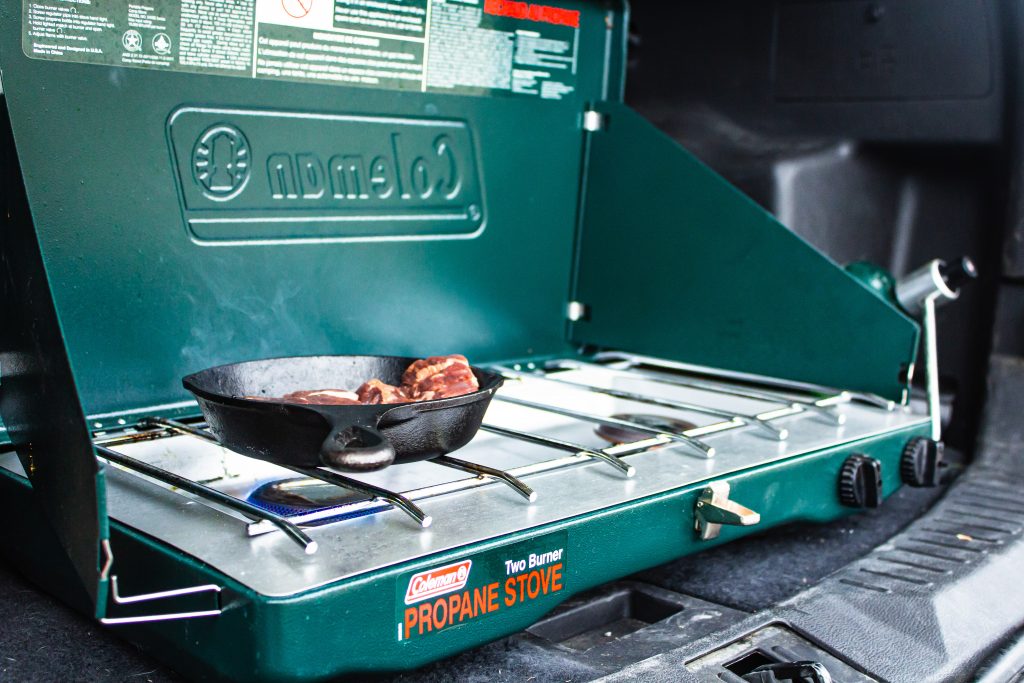
We use the Coleman 2-Burner Stove that works great. We do not go anywhere without it and it fits just right at the edge of the trunk in our 2014 Ford Escape. It is compact but can do the job of any big stove. With this setup, all you have to do is add your entrée from the cooler. The cast-iron skillet gives you hot temperatures and is a solid addition to your cooking arsenal.
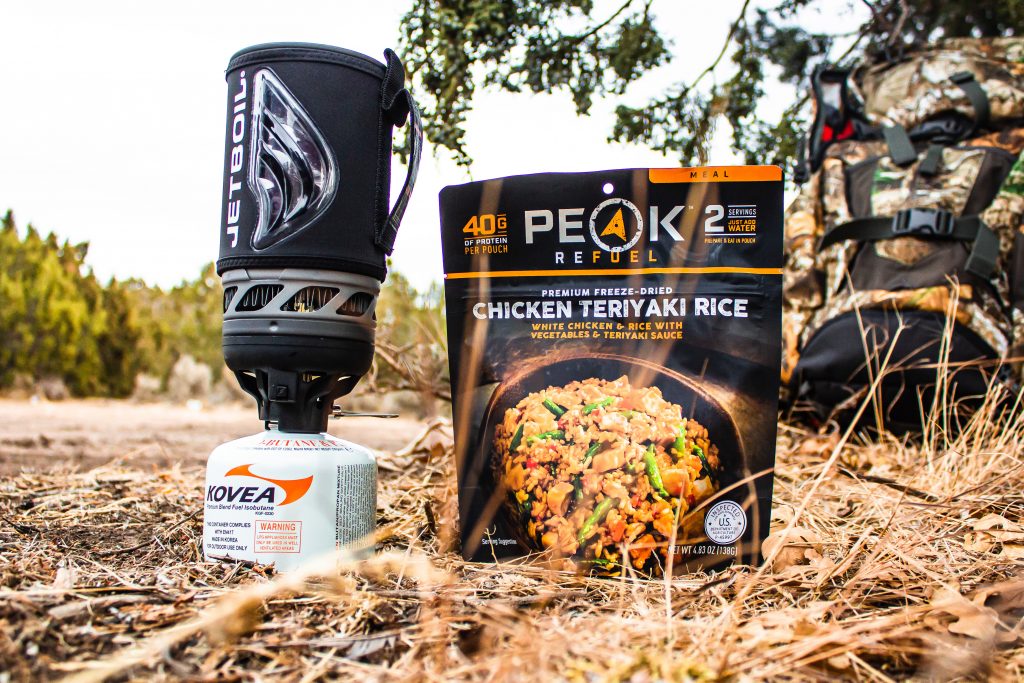
Backpack Cooking
This is the harder one. You obviously can’t carry a bin down the trail with you, so what do you do? Really, the same principles apply. Dedicate space within your pack for the essentials. What are those essentials? I thought you’d never ask.
- Camelbak Trophy S Pack
- Jetboil Flash Cooking System
- Jetboil Fuel (Or compatible fuel)
- Sea to Summit Utensils
- Lighter
- Water
- TORTILLAS
- BlackOvis 500 Lumen Headlamp
- Peak Refuel
Some important things to note. The Jetboil Flash Cooking System is meant to boil water, which it can do in under 100 seconds. However, you can cook other things inside it. As a minimalist backpacker, I just take extra care cleaning the Jetboil after I have cooked something different inside it. If you have the space, I highly recommend the Jetboil Pot Support and a lightweight pan like the Jetboil Summit Skillet. These don’t take up very much space and give you some peace of mind that you are utilizing the stove to the best of its ability. This gives you more space and weight to dedicate to water or your filtration system. Always remember to make sure you will have enough water.
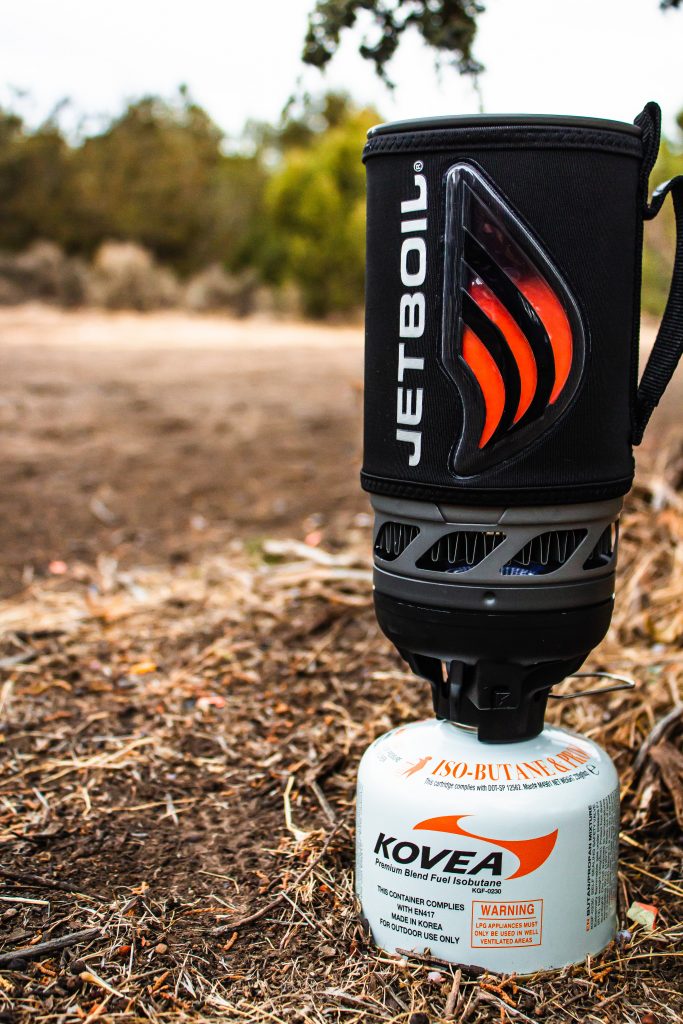
The Hacks
- How do you cook with these? Easy. Whatever way you want with whatever you want. One of the biggest hacks: Your pocketknife. It is an incredible tool you should never overlook. You can use it to turn your meat, cut your meat, dig out a flat space for the Jetboil, or even eat with.
- Due to our 1-year old daughter joining us on our adventures now, we’ve found that baby-wipes are an essential. Whether you have a baby or not, always having a plastic bag full of baby-wipes will always come in handy. Whether it’s a quick clean of the pan or utensils or keeping your hands clean while cooking, they have become a necessity in our packs.
- You’ll also notice in both lists, tortillas are mentioned. NEVER GO ANYWHERE WITHOUT TORTILLAS! These are literally edible plates. They add convenience and nutrition. Out in the woods, the more energy the better.
- Another thing listed in the essentials that is so important it needs to be listed twice: Utensils. Dedicate a set to your bin AND your pack. Never take them out. If you wash them, put them right back. There is nothing worse that getting out there and realizing you don’t have them.
- If you’re like us and haven’t been blessed with a pick’em up truck, you’ll want to keep some air freshener handy in the SUV. On a recent adventure we cooked up some tenderloins from a 2018 AZ deer, which turned out amazing, but when we packed up to head out the smell had penetrated the seats, the blankets, and anything else it could latch onto. Luckily, we were able to just air it out heading down the mountain, but a quick spray with some air freshener would’ve done the trick is no-time.
- PATIENCE. Cooking is an artform that only becomes more valuable in the backcountry. Take your time. Watch what you’re doing. Use the simplicities available to make your life easier. Take advantage of the essentials list. Add to it with your own personal touches. Pretty soon you’ll be the designated meal-planner and you won’t be stuck with whatever Dave’s wife stuffed inside the front pocket of his daypack three days ago.
- Last, but not least, always consider Peak Refuel. I am a huge advocate for the product. They are easy to store in your pack, they have incredible nutritional value, they are big enough to share, and most of all they have INCREDIBLE taste. They are the best option for whatever outdoor activity you’re doing. Always think Peak Refuel first, packing the cooler second.
